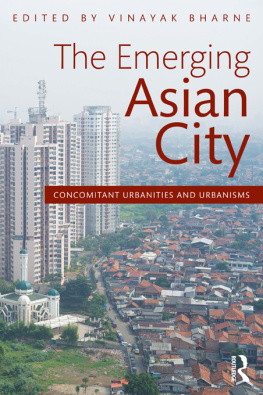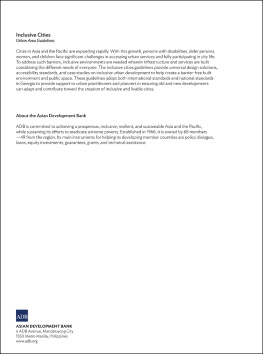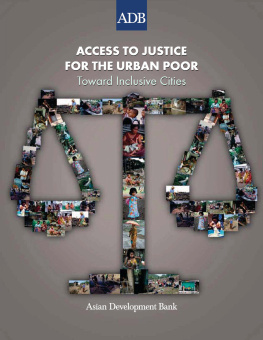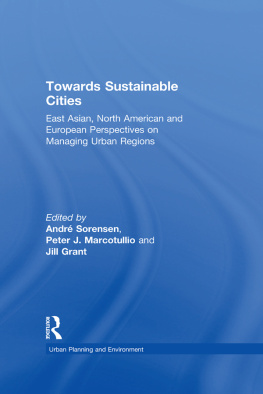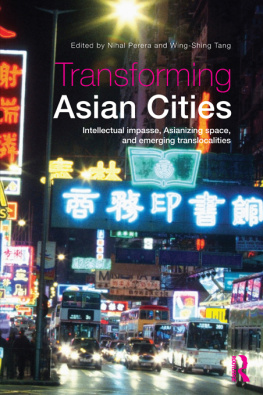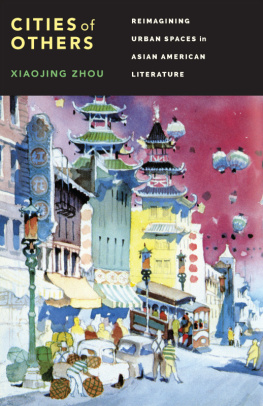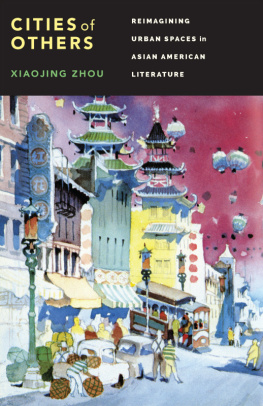
THE EMERGING ASIAN CITY
The Asian urban landscape contains nearly half of the planets inhabitants and more than half of its slum population, living in some of its oldest and densest cities. It encompasses some of the worlds oldest civilizations and colonizations, and today contains some of the worlds fastest growing cities and economies. As such Asian cities create concomitant imagery polarizations of poverty and wealth, blurred lines between formality and informality, and stark juxtapositions of ancient historic places with shimmering new skylines.
This book embraces the complexity and ambiguity of the Asian urban landscape, and surveys its bewildering array of multifarious urbanities and urbanisms. Twenty-four essays offer scholarly reflections and positions on the complex forces and issues shaping Asian cities today, looking at why Asian cities are different from the West and whether they are treading a different path to their futures. Their combined narrative spanning from Turkey to Japan and Mongolia to Indonesia is framed around three sections: Traditions reflects on indigenous urbanisms and historic places, Tensions reflects on the legacies of Asias EastWest dialectic through both colonialism and modernism, and Transformations examines Asias new emerging utopias and urban aspirations.
The book claims that the histories and destinies of cities across various parts of Asia are far too enmeshed to unpack or oversimplify. Avoiding the categorization of Asian cities exclusively by geographic location (south-east, Middle East), or the convenient tagging of the term Asian on selective regional parts of the continent, it takes a broad intellectual view of the Asian urban landscape as a both and phenomenon; as a series of diverse confluences geographic, historic and political extending from the deserts of the Persian Gulf region to the Pearl River Delta. Arguing for Asian cities to be taken seriously on their own terms, this book represents Asia as a fount of extraordinary knowledge that can challenge our fundamental preconceptions of what cities are and ought to be.
Vinayak Bharne is a joint adjunct faculty at the Sol Price School of Public Policy and School of Architecture at the University of Southern California in Los Angeles, and the director of design at Moule & Polyzoides Architects & Urbanists. He is the co-author of Re-Discovering the Hindu Temple: The Sacred Architecture and Urbanism of India and a contributing author of several books including Planning Los Angeles and Aesthetics of Sustainable Architecture.
THE EMERGING
ASIAN CITY
Concomitant urbanities
and urbanisms
Edited by Vinayak Bharne

First published 2013
by Routledge
2 Park Square, Milton Park, Abingdon, Oxon OX14 4RN
Simultaneously published in the USA and Canada
by Routledge
711 Third Avenue, New York, NY 10017
Routledge is an imprint of the Taylor & Francis Group, an informa business
2013 selection and editorial material, Vinayak Bharne; individual chapters, the contributors
The right of the editor to be identified as the author of the editorial material, and of the authors for their individual chapters, has been asserted in accordance with sections 77 and 78 of the Copyright, Designs and Patents Act 1988.
All rights reserved. No part of this book may be reprinted or reproduced or utilised in any form or by any electronic, mechanical, or other means, now known or hereafter invented, including photocopying and recording, or in any information storage or retrieval system, without permission in writing from the publishers.
Every effort has been made to contact and acknowledge copyright owners. If any material has been included without permission, the publishers offer their apologies. The publishers would be pleased to have any errors or omissions brought to their attention so that corrections may be published at later printing.
Trademark notice : Product or corporate names may be trademarks or registered trademarks, and are used only for identification and explanation without intent to infringe.
British Library Cataloguing in Publication Data
A catalogue record for this book is available from the British Library
Library of Congress Cataloging in Publication Data
The emerging Asian city: concomitant urbanities and urbanisms /
edited by Vinayak Bharne.
p. cm
Includes bibliographical references and index.
1. Cities and townsAsia. I. Bharne, Vinayak, editor of compilation.
HT147.A2E44 2013
307.76095dc23
2012010622
ISBN: 9780415525978 (hbk)
ISBN: 9780415525985 (pbk)
ISBN: 9780203094655 (ebk)
Typeset in Bembo
by RefineCatch Limited, Bungay, Suffolk
For Sebastian and Portia, who were both born somewhere between this book being an idea and a reality.
CONTENTS
PART I
Traditions
PART II
Tensions
PART III
Transformations
ILLUSTRATIONS
| The Maidan-i-Shah (main public square) in Isfahan, Iran |
| Manilas Intramuros and Burnhams succeeding plan |
| British colonial buildings along Strand Road, Yangon, Burma |
| Informal hilltop settlement, Tripoli, Lebanon |
| Pencil skyscrapers in central Hong Kong |
| Palm Jumeirah and Palm Jabel Ali, Dubai |
| A lingam (phallic symbol of Shiva) anoints a wayside tree in Connaught Place, New Delhi |
| Pipaleshwari temple, Connaught Place, New Delhi |
| The Arunachaleshwara temple, Tiruvannamalai, Tamil Nadu |
| Possible evolution of Meenakshi temple |
| The new Tuohe village of Inner Mongolia created for the Orochen ethnic minority |
| The Aoluguya village of Inner Mongolia housing the Ewenki |
| Traditional Ewenki clothes worn in the village, demonstrating a community with a continued sense of heritage |
| Taj Mahal seen from its quadrangular garden |
| Taj Mahal in its original riverfront context |
| Street in Taj Gunj showing one of the surviving historic gates |
| Villagers appropriate the dried riverbed that once formed the public setting of the Taj |
| Aksaray a view from the foothills |
| Measured plan drawing and interior photo of Vahit Beys house |
| Traditional versus apartment dwelling patterns |
| Irregular city wall of Seoul from Naksan Mountain at the east end of the Seouls Old City |
| The central southnorth street, a ceremonial axis, in Naju, viewed from north to the south gate |
| Golmok between the urban line and the urban plane in Naju. |
| Map of Naju showing network of golmoks |
| View of urban hanoks in Andong with high-rise buildings in the background |
| The matter-of-fact incorporation of Hindu Lingga and Yoni offerings in the Islamic Garebeg Maulud observance |
| Baroque pediment of the Mangkunegaran Palace serves as the backdrop for the hybrid Ottoman-Dutch-Indian costume of a marching band |
| In the hours awaiting the kings appearance the sober meditations of the Abdi Dalem are momentarily broken by an unexpected demonstration of affection |
| Entrance to Bayt Jabri Restaurant |
| Interior of Bayt Jabri Restaurant |
| The Shahbandar Palace Hotel |
Next page
